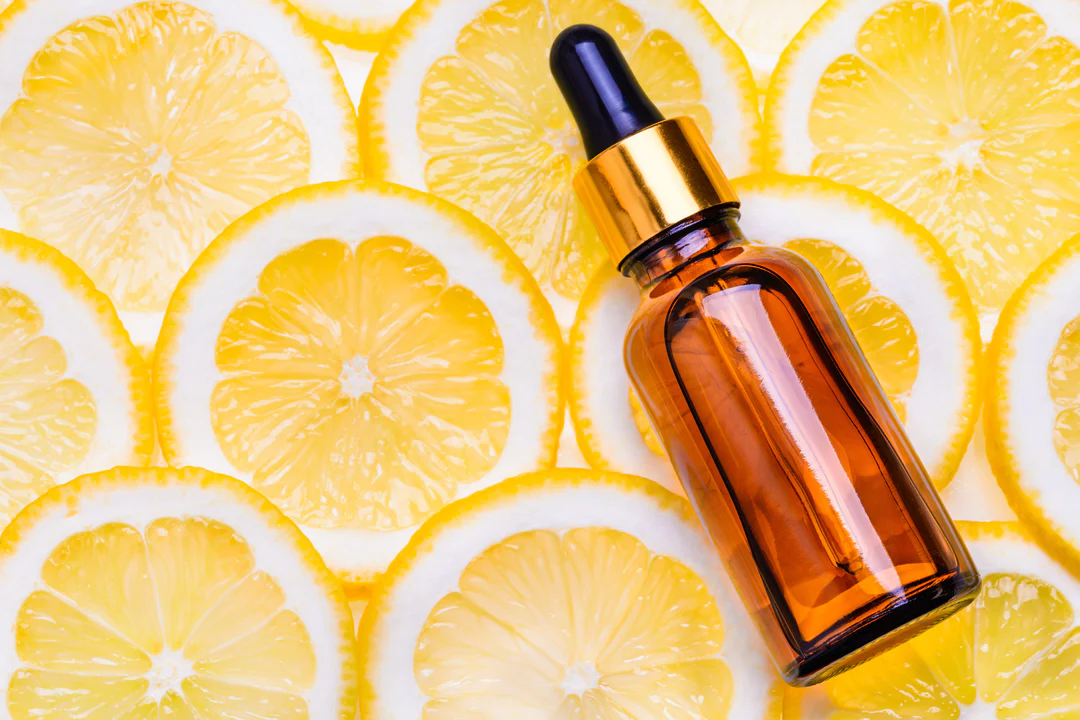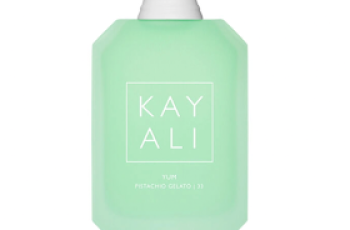How do you get rid of dry skin in the winter?
I don’t want to sound too much like Game of Thrones, but winter is coming, and rightly so. There’s a lot to look forward to during these cooler months, and the thought of spending long, dark nights under a blanket and hot chocolate gives us a wonderful feeling.
Many of us forget how damaging winter can be to our skin. How do you get rid of dry skin in the winter? Today we’re going to answer exactly that question and give you some great tips.
How do you treat dry skin in the winter? Here are some tips for treating dry skin: Make sure your environment doesn’t dry out your skin too much.
Cold drafts and central heating are two causes of dry skin in the winter. We rarely think about how our daily lives affect our skin, but many concerns about dryness are related to the environment we work or live in. The best way to protect your skin from the stress of dry air is to maximize its moisture.
Try to keep the heat at an appropriate level, not too hot to damage your skin. You can also try using a humidifier, which keeps moisture in the air for your skin to absorb, ensuring that the protective barrier is working properly and doesn’t become too dry.
Stock up on antioxidant serums. Antioxidant-rich serums can fight all the harmful free radicals and environmental stressors that our skin is constantly exposed to. We always recommend a daily serum that contains antioxidants like vitamin C.
However, if you haven’t yet incorporated it into your daily routine, now is the perfect time to do so.
Antioxidants can repair the skin by coating the outer layer of the skin with a protective film that keeps it from feeling dry, tight, and dull. Another point to consider is to wear sunscreen even on the darkest, dreariest winter days to prevent UV damage, which can also cause skin dryness.
Use a facial scrub. As skin dries out during the winter, it’s prone to some flaky, rough patches. To prevent these from building up and causing other skin issues like a dull complexion or rashes, it’s best to use a facial scrub to remove dead skin cells, dirt, and debris to reveal new skin. Use it regularly 2-3 times a week to avoid skin reactions like redness, tightness, and even more dryness. Choose a richer formula for your moisturizer. If you have a dry skin type, you may already be using a thick, rich formula as your daily moisturizer. This is ideal for those who are concerned about the health and appearance of their skin, as the cold winter weather can quickly wear off moisturizers, leading to irritation, dryness, and sometimes even redness. If you find yourself to be an oily skin type, try products rich in hyaluronic acid to keep your skin hydrated and comfortable without having to worry about clogged pores or excess sebum. How to Heal Dry Skin on Your Face Overnight. Your evening routine is the best time to repair the damage done during the day, especially in the winter. Here’s an overview of the best skin care routines to follow when the temperatures drop and you notice your skin drying out.
Choose a cleanser that is less irritating to your skin but still leaves it as clean as possible. Try products with chemical exfoliants like salicylic acid and glycolic acid. They are great for reaching the lower layers of the skin, removing dead skin cells and adding vitality to the skin.
If you don’t use a cleanser with the AHA and BHA content mentioned above, use a facial scrub 2-3 times a week. This will keep your skin clean without overloading it, which can cause irritation and discomfort after stripping away essential oils.
Massage your skin with antioxidant-rich serums and facial oils and apply generously when your skin is dry so that your skin has time to absorb the product while you sleep. An easy way to tell if you’ve applied enough product is to check your skin in the morning. It’s still sticky or feels tacky because you applied enough product the night before.
During the winter months, opt for a stronger, richer moisturizer to keep your skin’s protective barrier functioning properly throughout the day. Try a hydrating and moisturizing night mask for extra care while keeping your eyes locked. Avoid harsh chemicals, exfoliators, and cleansers in the morning and instead use water and a washcloth to remove overnight product residue. This keeps your skin clean and free of clogging that can cause many skin problems. Here are some steps to treat dry skin overnight. However, keep in mind that extremely dry skin caused by harsh winter weather and other daily stressors may take longer to treat. Here’s how to deal with dry skin on a daily basis. By following the steps above, you’ll prepare your skin for daily exposure to skin stressors. You can also try these tips to keep your skin happy and healthy throughout the day. Remember to apply sunscreen with SPF before applying makeup to protect yourself from harmful UV rays. If you know your skin will be exposed to a lot of central heating, try using an all-purpose moisturizer to relieve dryness and discomfort. Staying hydrated and drinking plenty of water can keep your skin healthy.
Switch your skincare products to ones that nourish and protect your skin and prevent it from drying out. Here are our tips on how to get rid of dry winter skin.
Over time, you’ll find that when you develop a nourishing and protective skincare routine to get through the winter, all your dryness issues will disappear. Before you know it, you’ll be dusting off your flip-flops and wearing
Book a pedicure!
DQH Knowledge drop: In your 20s, your skin cell turnover decreases. (Cell turnover is a key component in keeping your skin youthful.) You know what else slows down? Your collagen production. Starting in your 20s, collagen decreases by about 1 percent per year. Should you want to prevent fine lines and wrinkles, start by eliminating behaviors that contribute to premature aging. “If it’s bad for you, it’s bad for your skin,” says dermatologist Michel Somenek.
“Cigarette smoking reduces blood flow to the skin and causes premature wrinkling and a dull skin texture. Making the repeated pursed motion to inhale can also cause smoker’s lines. Alcohol and recreational drugs are toxins for the skin that damage its cellular structure and DNA,” Somenek tells us. “The faster you eliminate vices while you are young, the better chance your skin and body have to recuperate.” Also, adopting an anti-aging routine in your 20s is key. After all, the best offense is a good defense. We spoke to Somenek and experts Joshua Ross and Audrey Kunin to find out more.
Keep reading for the best anti-aging products for your 20s, according to skincare professionals.
Sunscreen
“We all know that the sun is the number one cause of skin aging and starting the prevention in your 20s is very important,” Ross says. “The majority of your sun damage won’t start to appear until you’re in your 30s, so don’t wait until you see it surface or you’ll be behind the curve. Stay ahead of it with a good-quality zinc-based sunscreen worn daily.”
Farmacy Green Defense Daily Mineral Sunscreen
An invisible sunscreen with SPF 30, plus botanical extracts meant to protect skin with tons of antioxidants. Bonus: It’s clean and fine to use under makeup.
Bareminerals Complexion Rescue™ Tinted Moisturizer Broad Spectrum SPF 30
Although we recommend you use your SPF and moisturizer separately, we also understand moments when you don’t have time or energy for that extra step. For those times, this bareMinerals moisturizer is a great thing to have on hand.
Vitamin C Serum
“A great introduction to anti-aging is to start with a vitamin C serum in your morning skincare routine,” Ross says. “It’s a powerful antioxidant that will neutralize free radicals and brighten the skin.” He adds that it’s a great way to counteract the effects of the sun’s harmful rays, which, as previously mentioned, are among the biggest causes of premature aging.
Drunk Elephant C-Firma™ Vitamin C Day Serum
The Drunk Elephant C-Firma is a lightweight serum that promises to give skin a glow by combining the brightening powers of vitamin C with ferulic acid, l-ascorbic acid, and vitamin E. The included sodium hyaluronate is meant to replace hydration loss, so you shouldn’t have to deal with any irritation.
Sunday Riley C.E.O. Rapid Flash Brightening Serum
This potent serum is jam-packed with vitamin C (15 percent, to be exact), which means it’s a potential superstar at both brightening skin and dousing it in antioxidants.
Peptides
Using peptides on your skin has many benefits, says Somenek. “The skin barrier is what defends the body against pollution, UV rays, bacteria, and toxins. It can be damaged by several everyday factors. Using topical peptides aids in building a stronger barrier,” he says. “Peptides comprise elastic fibers, which are a type of protein. These fibers help to make skin appear taut and firm. Peptides can also help repair damaged skin, relieve inflammation, and even out skin tone. Some peptides can kill acne-causing bacteria that is common in 20-somethings.”
Kunin agrees, saying, “Peptides are an excellent entry point for supporting collagen.” She recommends looking for face and eye treatments that contain these collagen-boosting powerhouses.
Charlotte Tilbury Magic Eye Rescue Cream
This Charlotte Tilbury super-emollient eye cream has a base of coconut oil and shea butter (read: it’s incredibly hydrating). Botanicals plus peptides are meant to help reduce dark circles and boost collagen, respectively.
This creamy moisturizer serves up potent collagen-boosting peptides and pycnogenol, and antioxidant-rich vitamin C. “Instead of sitting on top of the skin, peptides penetrate the outer layer so they go deep. The ‘signals’ they send tell the cells to produce elastin and collagen, which are needed for youthful-looking skin,” explains Somenek.
At-Home Peel Pads
Remember that skin cell turnover fiasco we talked about earlier? One way to help support it is by exfoliating. “Exfoliation is important to help keep skin fresh and luminous,” Kunin says. She recommends using at-home peel pads as an easy and effective way to exfoliate.
“The goal in your 20s is to fight the slowing pace of cell turnover. It is wise to use products that gently exfoliate, yet still remove oil and other impurities. Products that have Alpha Hydroxy Acids (AHA) or Beta Hydroxy Acids (BHA) are a good choice.”
According to Somenek, you should only exfoliate two to three times a week. “People of all ages are guilty of over-exfoliating and that can be too much of a good thing,” he says.
Dermadoctor Kakadu C Intensive Vitamin C Peel Pad
A few swipes of this Derma Doctor powerful peel pad promise to leave your skin glowing and smooth, thanks to the seven (yes, seven) types of chemical exfoliants, including AHA and BHA. It also contains vitamin C via Kakadu plum extract for added brightening and antioxidant protection.
KEY INGREDIENTS Kakadu plum extract is sourced from the Kakadu plum, a fruit grown in northern Australia. It contains vitamin C, which restores the skin’s natural barrier, increases collagen production, and soothes irritation.
Dr. Dennis Gross Skincare Alpha Beta® Universal Daily Peel Pads
These are the gold standard of peel pads, with a cult following and over 900 five-star reviews on Sephora. They’re easy to use and contain a blend of anti-aging exfoliating acids.
Emollient Night Cream
“In your 20s, you need to start upping the hydration in your skincare routine. You may have been cautious of over-moisturizing because of acne in your teens, but as you enter your 20s, your skin transitions and becomes drier,” Ross says. “I recommend an emollient night cream added into your evening skincare regimen.”
“Twenty-somethings need to make sure that they are not using creams that will clog their pores and cause excess oil production,” says Somenek. Opt for non-comedogenic products.
Cerave Skin Renewing Night Cream
One great choice is the CeraVe Skin Renewing Night Cream, which is a non-comedogenic night cream that leaves skin soft and glowy. It combines the moisturizing powers of ceramides and hyaluronic acid.
RoC Retinol Correxion Max Hydration Creme
“The best night cream ingredients contain retinol, benzoyl peroxide, and/or salicylic acid or hyaluronic acid. The goal is to moisturize, yet remove excess oil,” says Somenek. This Roc Retinol Correxion cream fits the bill as it contains both hyaluronic acid and retinol so it promises to moisturize while also being non-comedogenic.



